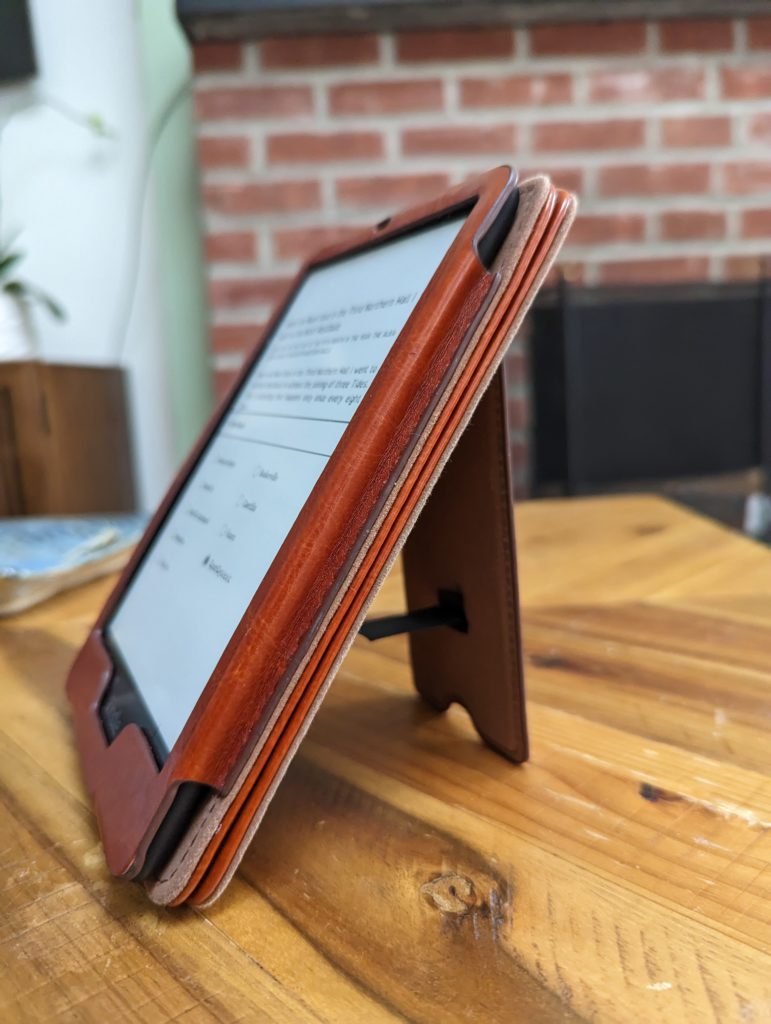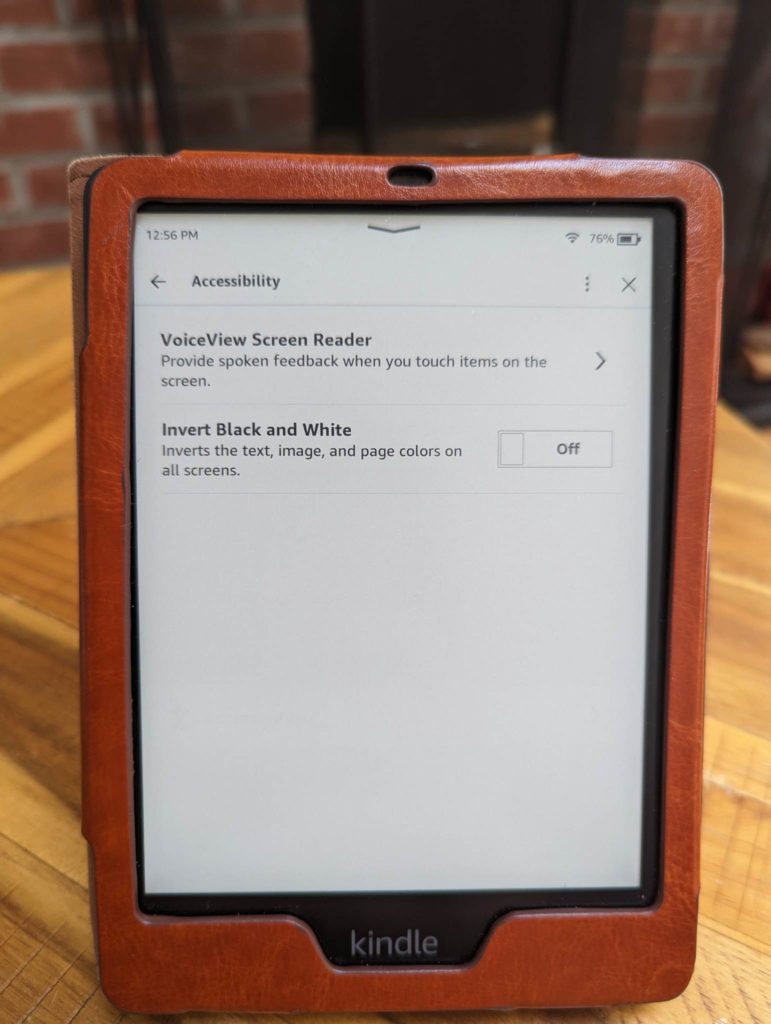The Amazon Kindle Paperwhite is a staple e-reader that offers users the ability to read and listen to books on an LED-backlit screen. While not designed for use only by disabled users, the Kindle is an assistive technology that allows for flexible usage depending on individual accessibility needs.
The Weight of Reading
I have a connective tissue disorder that can make holding a book open/up for a long time challenging or impossible. While traditional paper books weigh upwards of 15 ounces, the Amazon Kindle Paperwhite is 7 ounces. My Kindle is, therefore, a huge help in terms of assistive technology. It is much lighter than a traditional book and does not require page flipping or thumb pressure to hold it “open,” which makes it a great tool for those with limited mobility or reduced muscle tone. I have a case that also acts as a stand, eliminating the need for me to hold the Kindle at all, but this requires an additional purchase.

The Kindle is an inaccessible device for those with limited use of their hands. The power button requires a forceful push. While button-operated page advancers exist, as do stands and other accessories to hold the Kindle, for users who cannot tap or hold their Kindle, this requires an additional cost and is not produced by Amazon but by other sellers capitalizing on the functional features the Kindle lacks.
Brightness & Contrast
The Kindle offers a range of built-in accessibility settings to allow for a custom screen experience based on user preferences and needs. For instance, users can customize font size, spacing, and boldness to suit vision needs. Because the Kindle Paperwhite’s screen is backlit, there are many options and customizability for user needs. In addition to changing the warmth and brightness customizability, the Kindle offers Dark Mode and brightness adjustment to increase contrast or reduce the effect of light on the eyes. For users with dyslexia, Kindle is equipped with the “Open Dyslexic” font, which weights the bottom of letters to help readers distinguish between the letters in a word.

Interestingly, the “Accessibility” tab of the Kindle’s setting is somewhat limited in its options. The most flexibility in customizing the screen experience is available in the Kindle’s reading settings located in individual books. Importantly, though, the Accessibility tab allows users to access Amazon’s VoiceView feature.
Screen Readers
For those readers who use screen readers, the Kindle offers a VoiceView option to navigate the Kindle and read books. The VoiceView option feels like an aspect of the functional solutions model of designing for disability, whereby a company integrates service-based solutions for disabled users into their existing consumer technologies. Upon further investigation, users who wish to use the screenreader function on Kindle must ensure that the books they purchase or download from library apps like Libby are compatible with the Amazon VoiceView screen reader, which is a limitation.

A Functional Solution
The Kindle is by no means a “holy grail” device, and it is not designed primarily for use by disabled users. In many ways, the Kindle is an accessible reading option for disabled users: it offers a lighter weight, a customizable screen, and adaptable fonts. For those who need more adaptable interactions, though, other reading options with touch screens and expanded accessibility features like the Kindle Fire or iPad may be a better choice.
Citations
Kindle Paperwhite (8 GB) – Now with a 6.8″ display and adjustable warm light – Black. Amazon, February 2, 2023. https://www.amazon.com/Kindle-Paperwhite-adjustable-Ad-Supported/dp/B08KTZ8249
